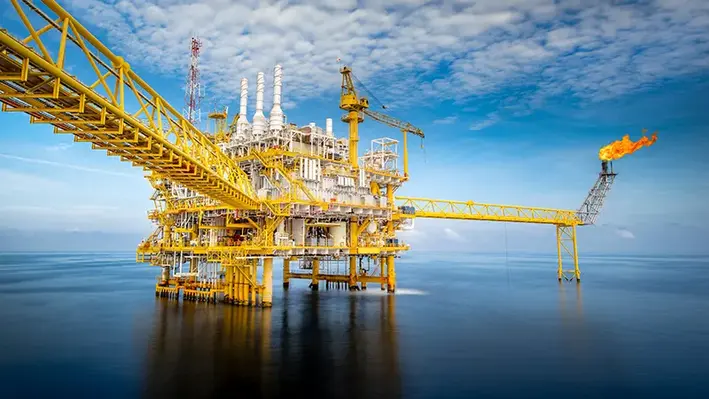
 Well intervention services are gaining momentum across Europe’s offshore energy sector, with the UK North Sea seeing a series of strategic operations aimed at optimising production, maintaining well integrity, and progressing decommissioning plans.
Well intervention services are gaining momentum across Europe’s offshore energy sector, with the UK North Sea seeing a series of strategic operations aimed at optimising production, maintaining well integrity, and progressing decommissioning plans.
As mature fields approach the end of their productive life, operators are increasingly turning to integrated technologies and service partnerships to extend asset value and support energy transition goals.
Halliburton has secured a five-year contract with Repsol Resources UK to support the full well lifecycle across its platform assets in the North Sea. The scope of work includes the delivery of subsurface technology, drilling and completion services, as well as digital solutions to enable efficient development and production. A key element of the agreement is the introduction of a rigless intervention framework, designed to enhance well construction, boost performance, and streamline plug and abandonment operations.
Timothy Horsfall, Vice President at Halliburton Europe, said the collaboration marks a strategic milestone, highlighting the shared commitment to safely and effectively maximising the potential of North Sea assets. This initiative reflects a broader trend of operators focusing on lifecycle efficiency while preparing for long-term decommissioning in compliance with UK regulatory targets.
Meanwhile, Odfjell Drilling Ltd has completed its scheduled Special Periodic Survey (SPS) for the Deepsea Aberdeen rig, concluding a multi-year SPS programme across its entire owned fleet. The sixth-generation semi-submersible has now returned to operations after three weeks of downtime, with work delivered on time and within budget. In addition to essential maintenance, Odfjell implemented major upgrades across the fleet, including the installation of a new blowout preventer on the Deepsea Atlantic and an increase in variable deck-load capacity on both Deepsea Atlantic and Deepsea Stavanger. These enhancements position the rigs for more efficient drilling, intervention, and decommissioning campaigns in challenging offshore environments.
CEO Kjetil Gjersdal acknowledged the extensive planning and coordination required, noting that with capital expenditure now significantly reduced and no major debt maturities until 2028, the company is well placed for future performance and returns. The Deepsea Aberdeen is currently drilling for Equinor at the Breidablikk field, under an extended contract that runs through 2026 with options into 2029.
Further demonstrating the importance of well intervention, Mermaid Subsea Services (UK) has completed a successful scale inhibitor treatment on the Teal P2 well in the Central North Sea. The project, undertaken for Anasuria Operating Company (AOC), was executed using the Island Valiant vessel and was aimed at preserving flow efficiency and well integrity for up to three years. The well is part of the Anasuria Cluster, a group of tied-back fields connected to a floating production storage and offloading unit. The intervention highlights Mermaid’s growing capabilities in subsea services and its ability to manage complex offshore operations in collaboration with multiple stakeholders. Scott Cormack, Regional Director for Mermaid, praised the outcome, calling it a reflection of the company’s commitment to operational excellence. AOC’s Wells Manager Tom Reeve added that the intervention not only protects long-term production but also strengthens the foundation for future work between the partners.
These developments collectively underscore how well intervention strategies, whether through lifecycle support, asset readiness, or targeted treatments, are shaping the future of offshore energy operations across the region.
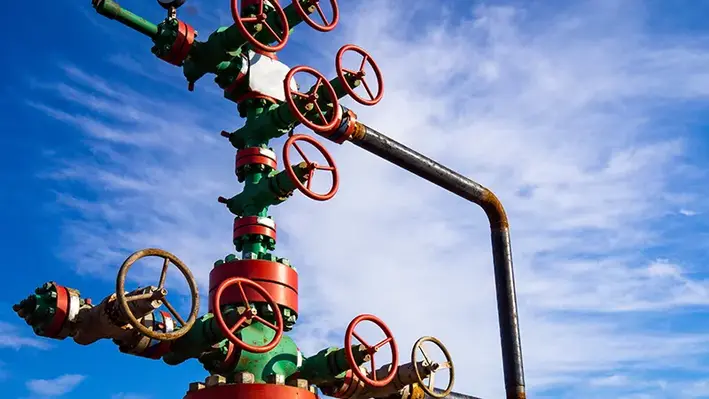
 Mermaid Subsea Services (UK) has completed a successful and safe well intervention on the Teal P2 well, located in the Central North Sea.
Mermaid Subsea Services (UK) has completed a successful and safe well intervention on the Teal P2 well, located in the Central North Sea.
The operation, undertaken on behalf of Anasuria Operating Company (AOC), utilised the Island Valiant vessel and supports the continued performance of the Anasuria Cluster—comprising the Teal, Teal South, and Guillemot A fields, all tied back to the Anasuria FPSO approximately 190km east of Aberdeen in 89 metres of water.
The primary goal of the intervention was to carry out a scale inhibitor treatment on the Teal P2 well, situated around 4km from the FPSO. The scale squeeze was designed to preserve flow efficiency and well integrity for up to three years.
This operation marked a key milestone in Mermaid’s expanding subsea services portfolio, showcasing its ability to deliver complex offshore campaigns in collaboration with multiple stakeholders. It also reinforces Anasuria’s strategy for enhancing long-term production and contributing to the UK’s energy resilience.
Scott Cormack, Regional Director for Mermaid Subsea Services (UK), stated, “This successful and efficient well intervention on Teal P2 highlights our expanding capabilities and ability to deliver complex subsea operations, be they in decommissioning or asset lifetime extension.”
“To safely execute the project with a positive outcome on the primary objectives, while working with Anasuria Operating Company and multiple partners, reflects our commitment to operational excellence and supporting the UK’s long-term energy resilience.”
Tom Reeve, Wells Manager for AOC, added, “Mermaid, with AOC partners, have delivered a successful result on the Teal asset, helping to protect long-term production and build a relationship for future works.”
For the second year running, it will operate from the Island Valiant under a charter agreement, thanks to the vessel’s strong performance in North Sea conditions. Mermaid also announced the upcoming introduction of its own dive support vessel, which will enter the market later this year.
“Mermaid is proud to continue supporting the energy sector in the North Sea and we’re excited that a new operational season is well underway. Our expertise in well decommissioning and asset integrity plays a vital role in safe, compliant, and cost-effective operations, and we look forward to working with clients new and old.
“The Island Valiant has been a reliable workhorse for us, and we’re excited to return with an expert crew, toolkit and solutions that are changing the way the basin operates,” concluded Cormack.


Odfjell Drilling Ltd has announced the successful completion of the Special Periodic Survey (SPS) for the Deepsea Aberdeen, which has now resumed operations following three weeks of scheduled downtime.
The Deepsea Aberdeen is a sixth-generation, semi-submersible offshore drilling rig owned and operated by Odfjell, a Norwegian drilling contractor based in Bergen.
It is designed for harsh environment and ultra-deepwater operations, particularly in regions like the North Sea.
With the completion of the Deepsea AberdeenSPS, the company has completed SPS projects across its entire owned rig fleet: Deepsea Aberdeen, Deepsea Atlantic, Deepsea Stavanger, and Deepsea Nordkapp.
Odfjell said that these were all delivered on time and within budget. The average downtime across all four rigs was below initial estimates.
In addition to the core SPS work, Odfjell Drilling implemented significant upgrades.
A new blowout preventer (BOP) was installed on Deepsea Atlantic, and the variable deck-load capacity was increased on both Deepsea Atlantic and Deepsea Stavanger.
Several client-specific efficiency improvements and minor upgrade projects were also completed.
With the SPS programme now concluded, the company expects a reduction in capital expenditure.
Additionally, the completion eases distribution restrictions under the terms of its US$390mn senior secured first-lien bond.
The company’s next SPS is scheduled for the Deepsea Nordkapp in late 2028.
Kjetil Gjersdal, CEO of Odfjell Drilling AS, commented, “Since early 2022, we’ve been preparing for this critical SPS period. With all eight rigs scheduled between 2023 and 2025, careful planning and strong execution have been essential – and I would like to thank the project organisation and every one of our onshore and offshore personnel for their valuable contributions.
“Our rigs are now in prime condition and installed with the latest technologies providing solid foundations to deliver further value and excellent performance. With significantly reduced capex payments going forward and no debt maturities until 2028, we are well placed for further stakeholder returns.”
Recently, Odfjell’s rigs have been active in the North Sea. The Deepsea Aberdeen is drilling for Equinor at the Breidablikk field, with contracts extended to 2026 and potential options until 2029.
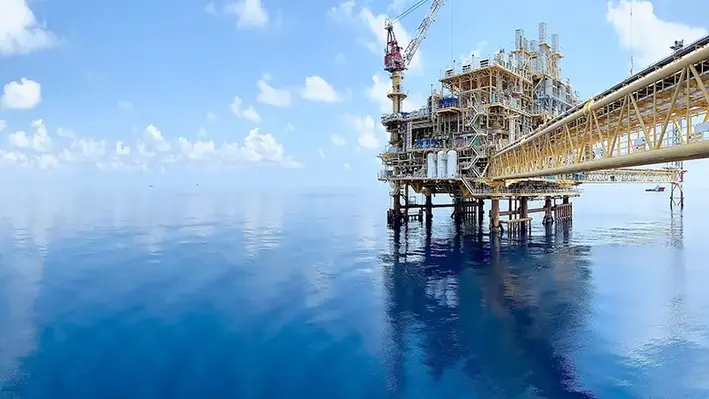
 Repsol Resources UK has selected Halliburton for a five-year contract to support the complete well lifecycle across its platform assets in the UK North Sea
Repsol Resources UK has selected Halliburton for a five-year contract to support the complete well lifecycle across its platform assets in the UK North Sea
Under the agreement, Halliburton will deliver subsurface technology, drilling and completion services, along with digital solutions to support major new developments. The contract also includes the implementation of a rigless intervention framework, designed to help Repsol Resources UK enhance well construction, production, and intervention efforts—particularly in support of plug and abandonment (P&A) operations.
“This collaboration between Halliburton and Repsol Resources UK marks a strategic milestone. The efforts to maximize the remaining potential of the UK North Sea align with our focus to provide safe and reliable P&A operations,” said Timothy Horsfall, vice president, Halliburton Europe.
The partnership is intended to set a new industry benchmark for innovation and economic progress. Halliburton’s integrated services will play a key role in advancing Repsol Resources UK’s decommissioning activities across the region.
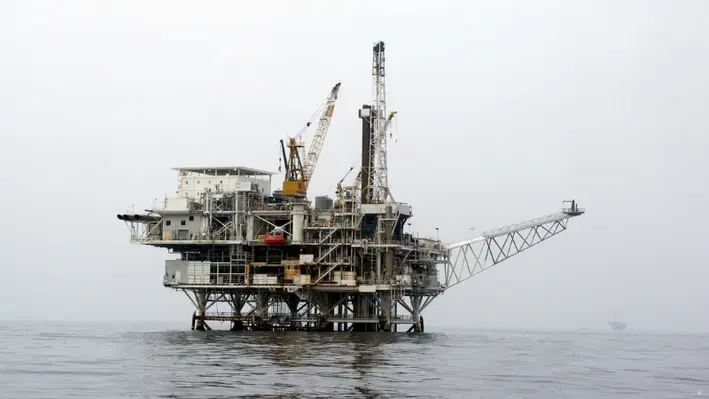

Baker Hughes has been selected by Equinor to deliver plug and abandonment (P&A) services in the Oseberg East field, located on Norway’s continental shelf.
The project will be led by Baker Hughes’ Mature Assets Solutions team, which will oversee both the planning and execution of the integrated P&A campaign across multiple wells in the North Sea.
Known for its expertise in mature asset management, Baker Hughes brings a robust track record of enhancing efficiency, shortening project timelines, and lowering overall costs through its integrated P&A services.
Under this new programme, the company will handle well abandonment and project management duties on behalf of Equinor.
This latest assignment follows a multi-year framework agreement signed in March 2025 between Baker Hughes and Equinor for integrated P&A services.
As part of the engagement, Baker Hughes will set up a P&A Center of Excellence in Bergen and Stavanger.
This specialised hub will centralise operations and bring together project managers and technical experts to ensure safe, cost-effective, and efficient well decommissioning.
The company will deploy advanced technologies from its P&A portfolio, including PRIME Powered Mechanical Applications, CICM (Casing Integrity & Cement Mapping), the MASTODON casing retrieval system, and the Xtreme SJI mechanical slotting tool.
Planning is already underway, with field execution expected to start in 2026.
“Our Mature Assets Solutions experts are well equipped to manage every phase of P&A and optimise operations to meet Equinor’s well abandonment goals,” said Amerino Gatti, executive vice president of Oilfield Services & Equipment at Baker Hughes. “As this project unfolds, we will collectively unlock new efficiencies that set new standards for well abandonment solutions, providing cost-effective solutions to Equinor through collaboration, technology, optimisation and integration.”


A recent report by Allied Market Research titled “Well Intervention Market by Service, Intervention Type, Well Type and Application: Global Opportunity Analysis and Industry Forecast, 2021–2030” forecasts strong growth in the global well intervention market.
Valued at US$8.7bn in 2020, the market is expected to reach US$15.3bn by 2030, growing at a CAGR of 5.8%
Well intervention involves various operations designed to increase the productivity of oil and gas wells. These services include slickline and wireline interventions, subsea intervention, coiled tubing, hydraulic workover, remedial services, stimulation, and others.
Globally, mature oilfields contribute up to 75% of total oil production, which significantly drives the demand for well intervention services. This demand is expected to rise as operators seek to enhance well productivity and efficiency.
In Europe, countries such as Germany, France, Spain, and Italy have been impacted by the COVID-19 pandemic, which introduced challenges to well intervention activities. Strict safety measures like social distancing and movement restrictions reduced manpower availability and disrupted supply chains, leading to slower operational activity.
Despite these challenges, Europe continues to be an important market due to its mature oilfields and ongoing need for well maintenance and production enhancement.
Key drivers influencing the growth of the well intervention market include:
The report highlights several market segments:
Regionally, North America remains the dominant market due to extensive shale oil developments and the presence of key players. However, Europe’s mature fields and regulatory environment make it a critical region for well intervention services.
For a comprehensive insight into the global well intervention market, you can access the full report by Allied Market Research here.


Aker Solutions has successfully deployed an autonomous drone system on Aker BP’s Edvard Grieg platform in the North Sea, enabling frequent, remote inspections controlled from an onshore centre in Stavanger.
The company recently achieved a milestone by completing its first offshore beyond-visual-line-of-sight (BVLOS) drone operation.
The inspection flight, conducted by a drone stationed on the platform, utilised autonomous navigation and advanced sensors to capture high-resolution imagery and data, marking a significant step toward fully autonomous offshore inspections.
The drone system includes an offshore docking station, supporting infrastructure, and custom software developed by Aker Solutions, complemented by an onshore control room.
It integrates airspace and AIS monitoring, along with two-way communication with the Helicopter Landing Officer (HLO) and platform leadership, ensuring seamless coordination.
By combining autonomous drones with AI-powered analytics, the system enables frequent, highly accurate inspections.
The drone captures consistent, precisely positioned images and videos, facilitating continuous equipment monitoring.
This allows for early detection of wear, corrosion, or other issues, enabling proactive maintenance to prevent escalation.
Autonomous drones, machine learning, and robotics are central to Aker Solutions’ digital strategy, which focuses on enhancing project execution, developing innovative services, and building a digitally ready organisation grounded in advanced data and software technology.
“We believe autonomous drones will revolutionise how inspection and maintenance are performed in the energy industry. Permanently deploying a drone on an oil platform — combined with robotics, AI, and digital technologies takes offshore maintenance to a new level, improving safety, reducing costs, and increasing efficiency across offshore asset management,” said Anja Dyb, SVP Life Cycle Services, Aker Solutions.
“Aker BP's operational strategy is based on the assumption that robotics and drones will be an integral part of observation, inspection and task executions offshore. These technologies will operate autonomously or remotely, either on-site or from land. The successful remote-controlled offshore drone operation at the Edvard Grieg platform, executed by Aker Solutions, is an important milestone for Aker BP as well," said Thomas Øvretveit, director of operations at Aker BP.
“We estimate that autonomous drones can reduce inspection costs by up to 70% and deliver detailed insights within hours — a process that traditionally takes days with manual drone operations,” said Joachim Hovland, head of drones and robotics.
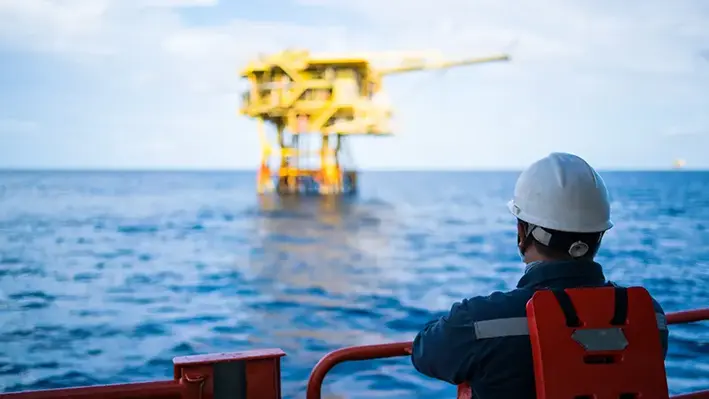

Europe’s well intervention market is poised for steady growth in 2025, supported by advances in digital platforms, subsea integrity projects, and integrated well management services.
Operators and service providers across the North Sea and other mature European basins are adopting innovative technologies to improve well performance, reduce downtime, and extend asset life, which are critical factors as many fields transition from peak production to late-life operations.
A key development is Sentinel Subsea’s completion of a major North Sea integrity project. This initiative focused on enhancing subsea infrastructure reliability through advanced inspection, maintenance, and repair techniques. The project highlights how subsea integrity management is becoming a cornerstone of well intervention strategies, helping operators mitigate risks and optimize production in complex environments.
Meanwhile, Schlumberger (SLB) is advancing well intervention through its newest digital platform, Electris. The technology leverages real-time data analytics, machine learning, and remote monitoring capabilities to provide operators with deeper insights into well conditions. This enables predictive maintenance and faster decision-making, reducing intervention costs and improving uptime.
Exceed, a specialist well management company, is also playing a vital role by delivering integrated well management services for Viaro’s assets in the North Sea. Their approach combines detailed well planning, intervention execution, and data-driven optimisation, reflecting the broader market trend towards end-to-end well lifecycle management. This helps operators adapt to evolving reservoir conditions and maximize economic recovery.
According to the “Europe Well Intervention Market, By Country, Competition, Forecast and Opportunities, 2020-2030F” report conducted by Research and Markets, the sector is expected to grow from US$4.73bn in 2024 to US$7.17bn by 2030.
The European well intervention market itself shows promising prospects. Driven by the need to maintain production from ageing fields and the increasing complexity of reservoir conditions, operators are expected to invest steadily in both traditional and innovative intervention techniques. Services such as coiled tubing, wireline, and subsea intervention are evolving to meet these demands with improved efficiency and safety standards.
Moreover, digitalisation and automation continue to transform the sector. Operators seek to reduce operational risks and carbon footprints while optimising costs, aligning with Europe’s energy transition goals. Emerging technologies, including digital twins, AI-powered diagnostics, and advanced robotics, are being piloted and gradually integrated into intervention workflows.
In summary, 2025 is set to be a pivotal year for Europe’s well intervention market, where technological innovation and integrated service models will drive growth, improve asset integrity, and support sustainable hydrocarbon production amid a changing energy landscape.
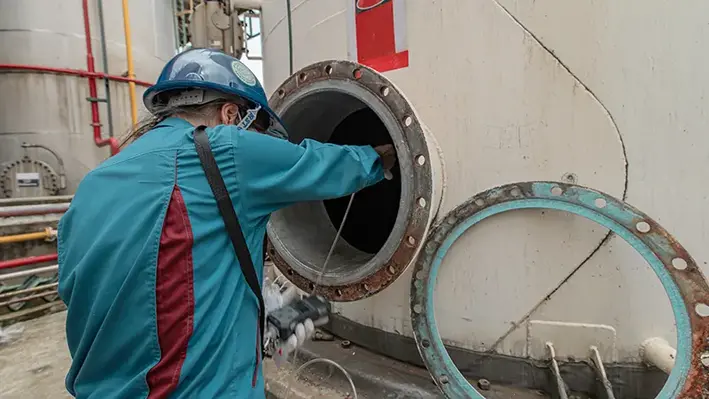
 Viaro Group has appointed well management company, Exceed Energy, as the well operator for the 192 wells from One Gas West assets.
Viaro Group has appointed well management company, Exceed Energy, as the well operator for the 192 wells from One Gas West assets.
This follows Viaro’s acquisition of the North Sea assets from Shell and ExxonMobil.
The contract will enable Exceed to manage all aspects of late life well operations, starting with the decommissioning of the 26 wells associated with the SNS Leman Foxtrot and Golf platforms, which commences later this year.
This will be followed by well intervention and further decommissioning operations, as well as the development of new gas production wells as per the five-year, multi-million contract.
Marking the win as the most significant in its 20-year history, John Anderson, Exceed's Commercial Director – Wells, said, "Our well and reservoir management capabilities have gained an outstanding reputation for the ability to balance decarbonisation with energy security and affordability, as we continue to champion a sustainable UK energy transition.
"Understandably, this contract has been keenly contested across the North Sea industry, and we are delighted that our capacity and competency have been recognised by Viaro as providing optimum levels of expertise and support for its major acquisition."
Click here to register for Offshore Network's international well intervention and decommissioning conferences.
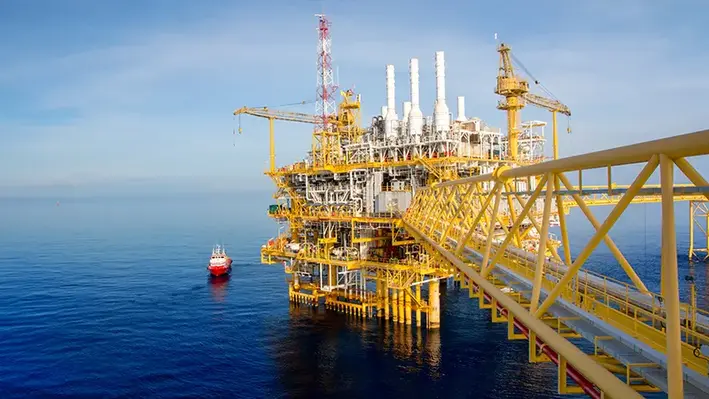

The European well intervention market, valued at US$4.73bn in 2024, is forecasted to grow to US$ 7.17bn by 2030, at a CAGR of 7.02%. Well intervention encompasses a range of operations aimed at maintaining, repairing, or boosting oil and gas wells to ensure optimal production and efficiency.
Demand in Europe is rising due to energy security concerns amid geopolitical tensions and supply disruptions. To reduce reliance on imports, European countries are investing heavily in well intervention services to maximise output from existing assets. Techniques such as enhanced oil recovery (EOR) and gas lift optimisation play vital roles in sustaining production levels and managing decline rates. Operators are also balancing fossil fuel production with sustainability objectives, using well intervention to lower environmental impact.
Despite its growth, the market faces challenges including high operational costs, especially offshore in regions like the North Sea, where harsh conditions and complex logistics increase expenses. Price volatility in the oil and gas sector, along with rising material costs and supply chain issues, add further pressure.
To address these hurdles, the industry is adopting cost-effective methods like rigless interventions, leveraging advancements in coiled tubing and electric wireline technologies. Maintaining stringent safety standards remains a priority.
Digital transformation is reshaping the sector through AI, machine learning, and real-time data analytics, which help optimise operations, cut costs, and improve safety. Technologies such as fiber-optic sensors and downhole cameras support remote monitoring and predictive maintenance, reducing downtime and preventing failures.
Robotic intervention systems and remotely operated vehicles (ROVs) are increasingly used to improve safety and efficiency in hazardous offshore environments. Autonomous coiled tubing units and electric wireline tools enable precise, minimally disruptive interventions.
The market covers service types, well types, and applications across countries like Norway, the UK, Turkey, Italy, Denmark, and Germany. Comprehensive competitive analyses highlight major players and emerging opportunities tailored to corporate strategies.
This analysis is based on the report “Europe Well Intervention Market, By Country, Competition, Forecast and Opportunities, 2020-2030F” conducted by Research and Markets. For more information, visit here
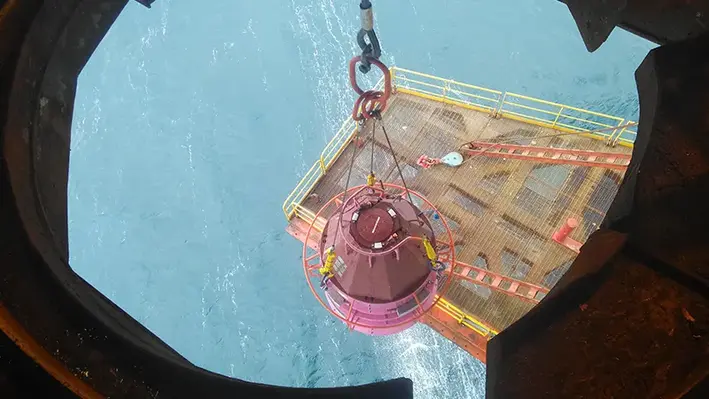
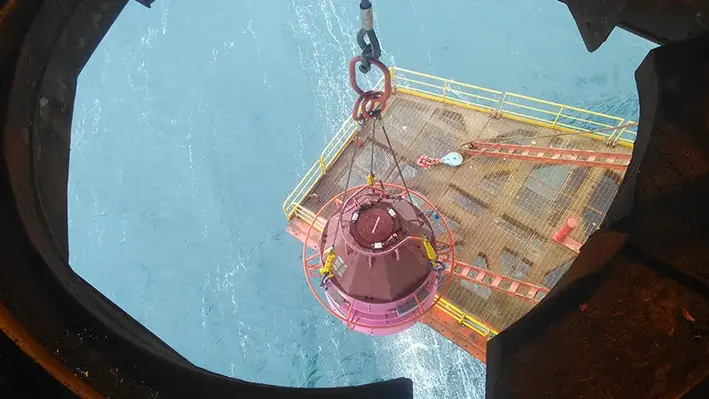 Sentinel Subsea, a specialist in subsea well integrity monitoring, has successfully delivered a six-figure project involving the deployment of two WellSentinel Coral systems for a major operator in the North Sea.
Sentinel Subsea, a specialist in subsea well integrity monitoring, has successfully delivered a six-figure project involving the deployment of two WellSentinel Coral systems for a major operator in the North Sea.
Supporting a large-scale drilling campaign, the project represents a key step in enhancing offshore safety and operational effectiveness.
The Coral systems provided continuous integrity monitoring throughout the well suspension period, helping to ensure safe operations during this critical phase. The deployment took place entirely in February 2025.
Notably, this is the first time the WellSentinel technology has been deployed at the start of a well’s lifecycle, underscoring the value of passive monitoring early in offshore developments. The operator’s adoption of this strategy aligns with the ALARP (As Low As Reasonably Practicable) principle, reducing risk exposure during planning delays before christmas tree installation.
“We are thrilled to have successfully completed this project, which highlights Sentinel Subsea’s commitment to safety, innovation, and growth. This is a key moment for us, as it is the first time our WellSentinel technology has been deployed at the beginning of a well’s lifecycle. Partnering with a major operator in the North Sea strengthens our presence in the region and contributes to our continued global expansion,” said Neil Gordon, CEO of Sentinel Subsea.
The Coral systems were installed onto 18 ¾” wellheads from a jack-up rig via the texas deck using crane wire. As the units were preconfigured for detection before installation, no in-well intervention was required, streamlining operations.
Headquartered in Aberdeen since its founding in 2018, Sentinel Subsea continues to deliver passive monitoring solutions globally for both major and independent operators. This project further establishes its leadership in subsea well integrity monitoring.


Global energy technology company SLB has unveiled Electris, a portfolio of digitally enabled electric well completions technologies designed to enhance production, improve recovery, and lower the total cost of ownership of oil and gas assets.
Electris completions enable digital control over the full productive zone of the wellbore, delivering real-time production intelligence across the reservoir.
This capability allows operators to predict, adapt, and respond confidently to changing production conditions, by optimising reservoir performance throughout the well’s lifecycle and unlocking reserves typically left behind by conventional systems.
“Electris completions take reservoir management to the next level — making it possible for operators to get more out of their assets with fewer requirements for costly well interventions,” said Paul Sims, president, Production Systems. “With much of the ‘easy’ oil already produced, operators are encountering more and more complex reservoirs. Electris completions can help shift the production economics in these reservoirs — resulting in higher recovery factors that maximise return on investment from the asset.”
To date, more than 100 Electris completions technologies have been installed across five countries. In one case offshore Norway, Electris was deployed in an extended-reach well to increase oil production.
The operator is using data from the system to identify which zones are actively contributing to output, allowing them to optimise oil flow and reduce water production.
By managing water output, the system has also cut the energy required to lift and reinject treated water into the reservoir.
SLB launched the new technology last week in Houston, with plans to roll it out for global operations.
Page 5 of 35
Copyright © 2025 Offshore Network